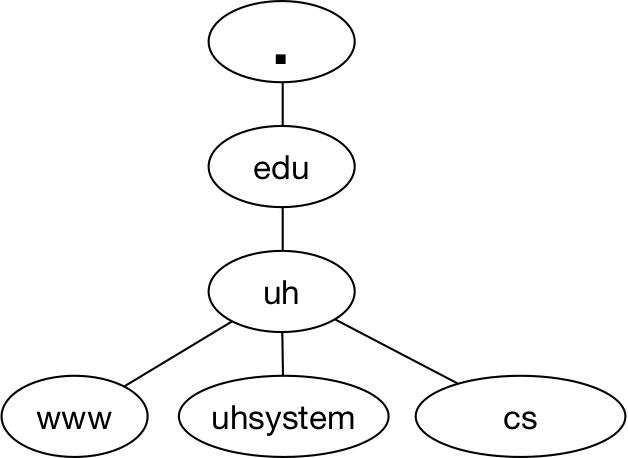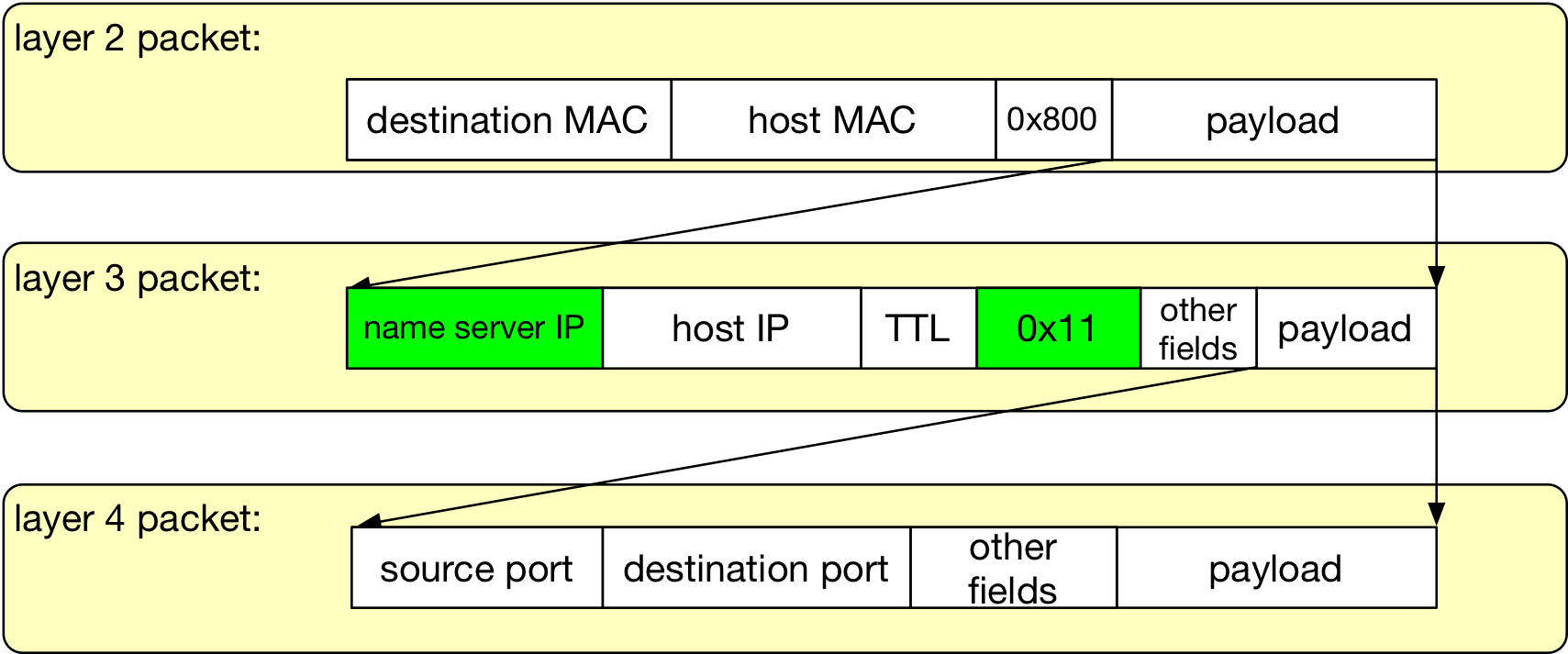DNS Global System¶
Internet naming hierarchy is a DNS data tree where the root of the tree is represented
with the label “.” and top level domains as first level leaves: e.g., .com, .edu,
.gov, .mil, .org, .net, etc.

Given an IP address what is the name?
The PTR records are in the in-addr.arpa. branch of the tree with a specific format:
Domain name is the value of the PTR record. E.g., if the IP address of a name,
lan1.example.com is 10.0.75.12, the PTR record would be for the name
12.75.0.10.in-addr.arpa.. The existence of a PTR record does not guarantee the IP
address will have only one value that the PTR record returns. And, there will only be
one PTR record for an IP address. In essence, PTR records are referring to how IP
address owners and/or administrators are utilizing their IP address space rather than actually
serving the Internet Naming Hierarchy for users.
Each organization is responsible for its own domain name and subdomains in the hierarchy.
Along with its IP address space, the organization manages how it is registered to the overall
global naming hierarchy. For example, University of Houston has an A record for its domain
name www.uh.edu along with a corresponding PTR record:
Subdomain names are served through nameservers in each domain’s networks with the records for names, IP addresses, and other information. Administrators are responsible for the naming scheme of a domain while also maintaining their authoritative nameservers per domain. All hosts within the domain have a record of their name and address. DNS domain administrators configure their DHCP services to advertise the relevant nameservers in their networks.

The UH domain name is under the TLD .edu and it has been registered to have the addresses
www.uh.edu, uhsystem.uh.edu, and separately, also cs.uh.edu.¶
DNS Query and Response¶
Given a host configuration with a valid DNS nameserver IP address, the host would as for the IP address for a given name using the packet format:

The query would be inside the layer 4 payload of the packet:
